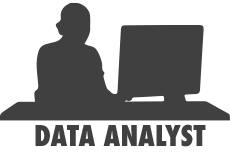Modern organisations struggle not because leaders fail to communicate, but because their messages fail to connect. This post explores why traditional corporate communication—focused on data, purpose statements, and “what’s in it for me”—often falls flat, and reveals how storytelling rooted in identity transforms the way employees engage with change.
Using a real workplace example and insights from thinkers like Seth Godin, Brené Brown, James Clear, Steve Denning, and Adam Grant, the article explains how employees respond not to abstract metrics or polished mission statements, but to narratives that make them feel seen, valued, and capable of making a difference. The most powerful motivator isn’t purpose alone—it’s identity: helping employees see who they can become.
The post shows leaders how to shift from transactional messaging (“We need to increase productivity”) to identity-shaping storytelling (“This is your opportunity to become a Supervisor of Robots”). When leaders frame change as an identity-aligned opportunity, employees feel ownership, pride, and connection.
This is the missing link: storytelling that creates belonging. When employees see themselves in the organisation’s story, they become active participants in its progress—because every action becomes a vote for the person they believe they are becoming.
Please take note that this blog post will only make sense to you if you have attended our Signature Workshop - Strategic Storytelling Welcome back, workshop alumni! You've mastered the art of building a powerful storyboard, meticulously crafting each element of your narrative. Now, it's time to bring that vision to life with the help of Gen AI. This post will guide you through using AI to...
Those of us who are involved in causes aimed at changing social attitudes and structures often feel frustrated by the theoretical nature of our efforts. After all, one successful demonstration can feel far more effective than a hundred speeches. This idea, drawn from Malcolm Gladwell's "The Revenge of The Tipping Point" really stuck with me. It made me reflect on Martin Luther King Jr.'s iconic...







